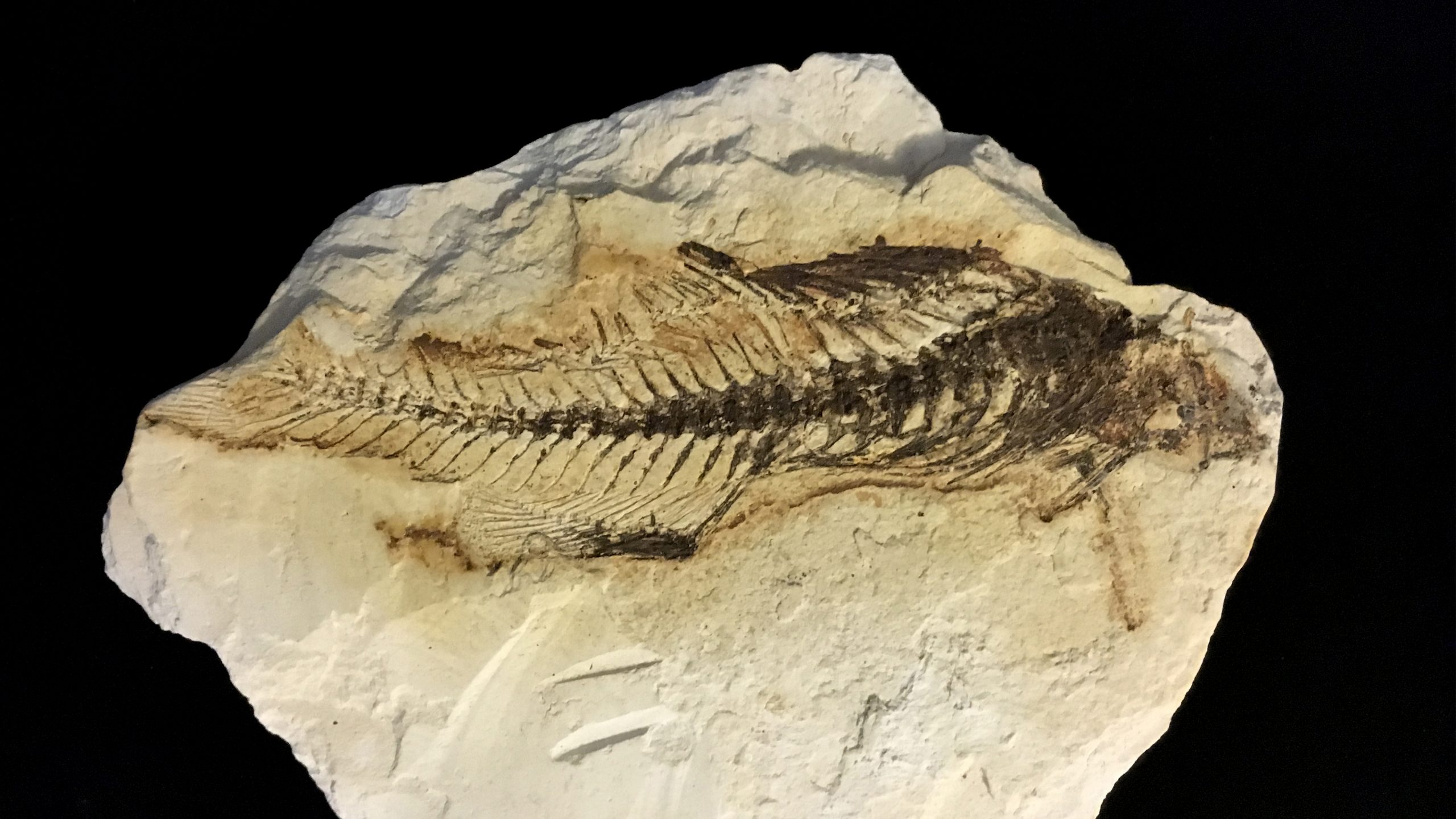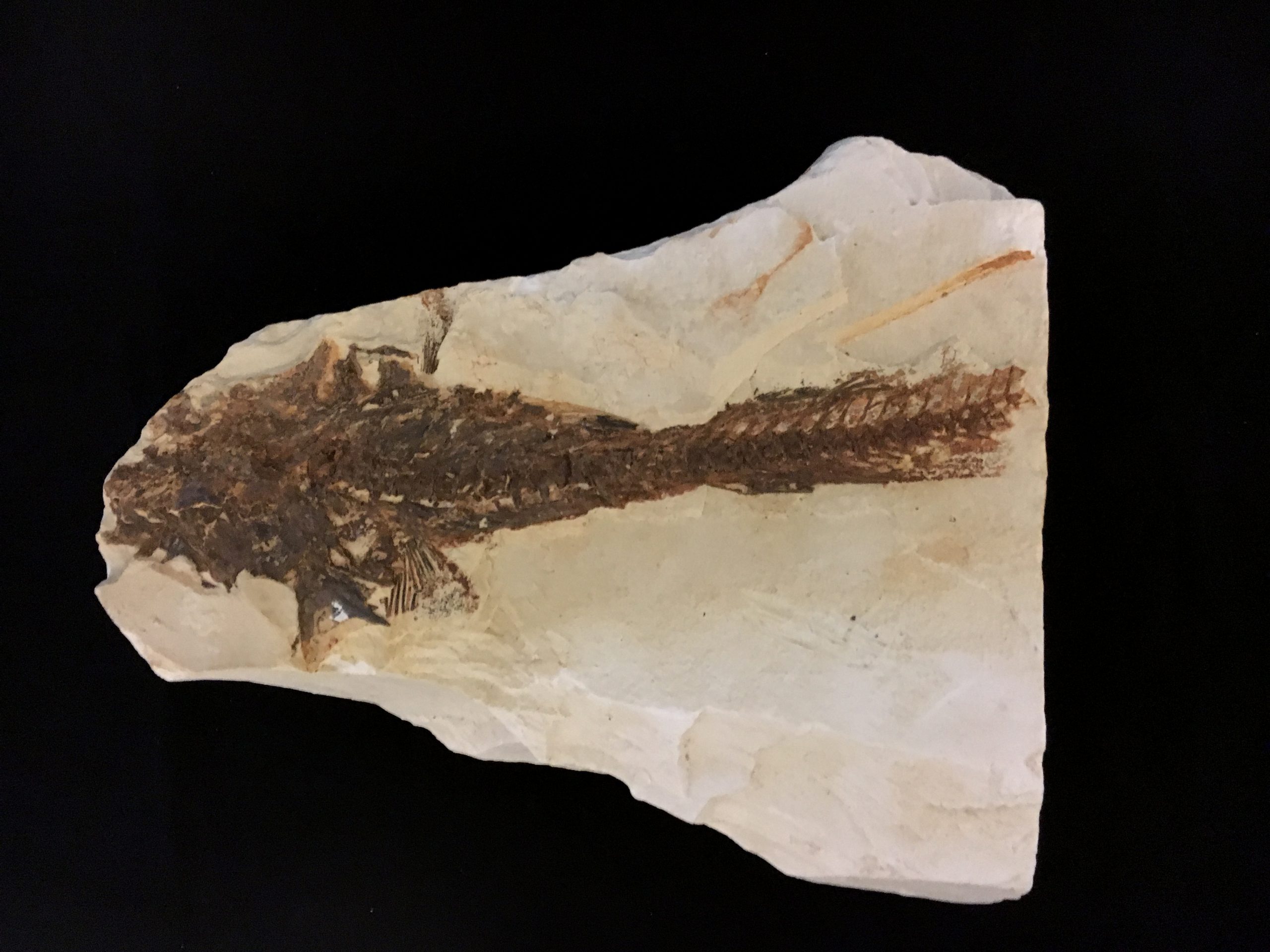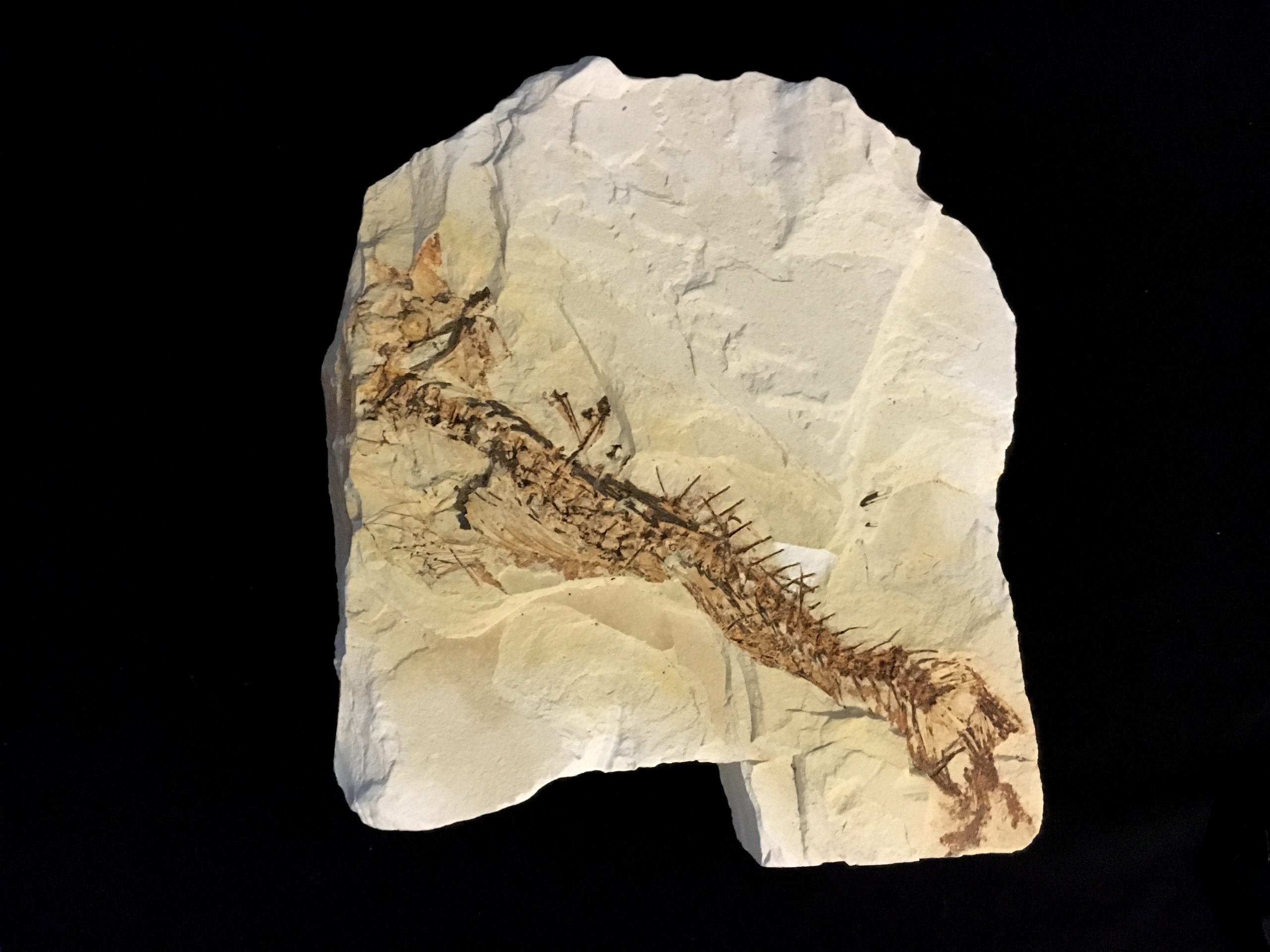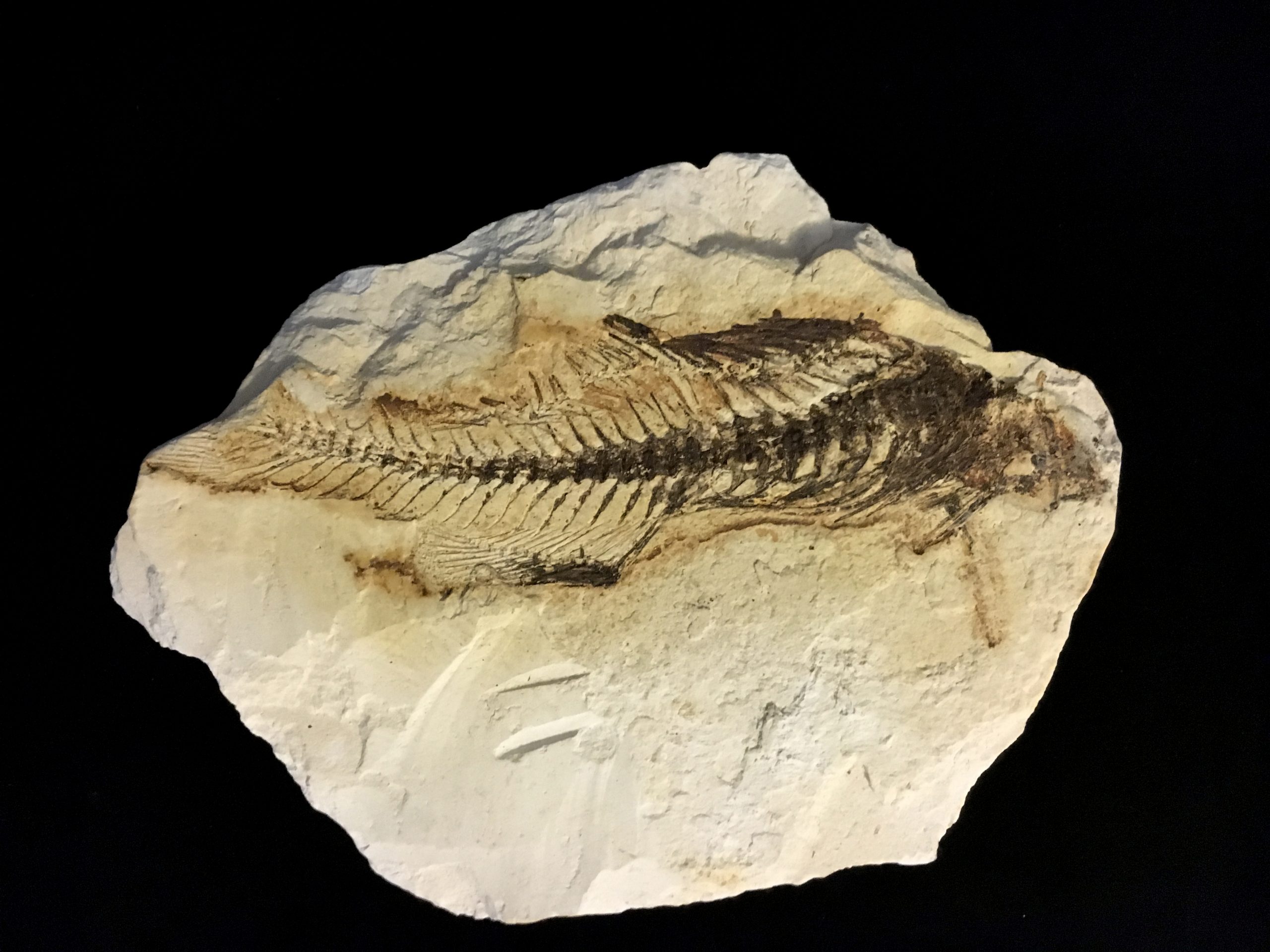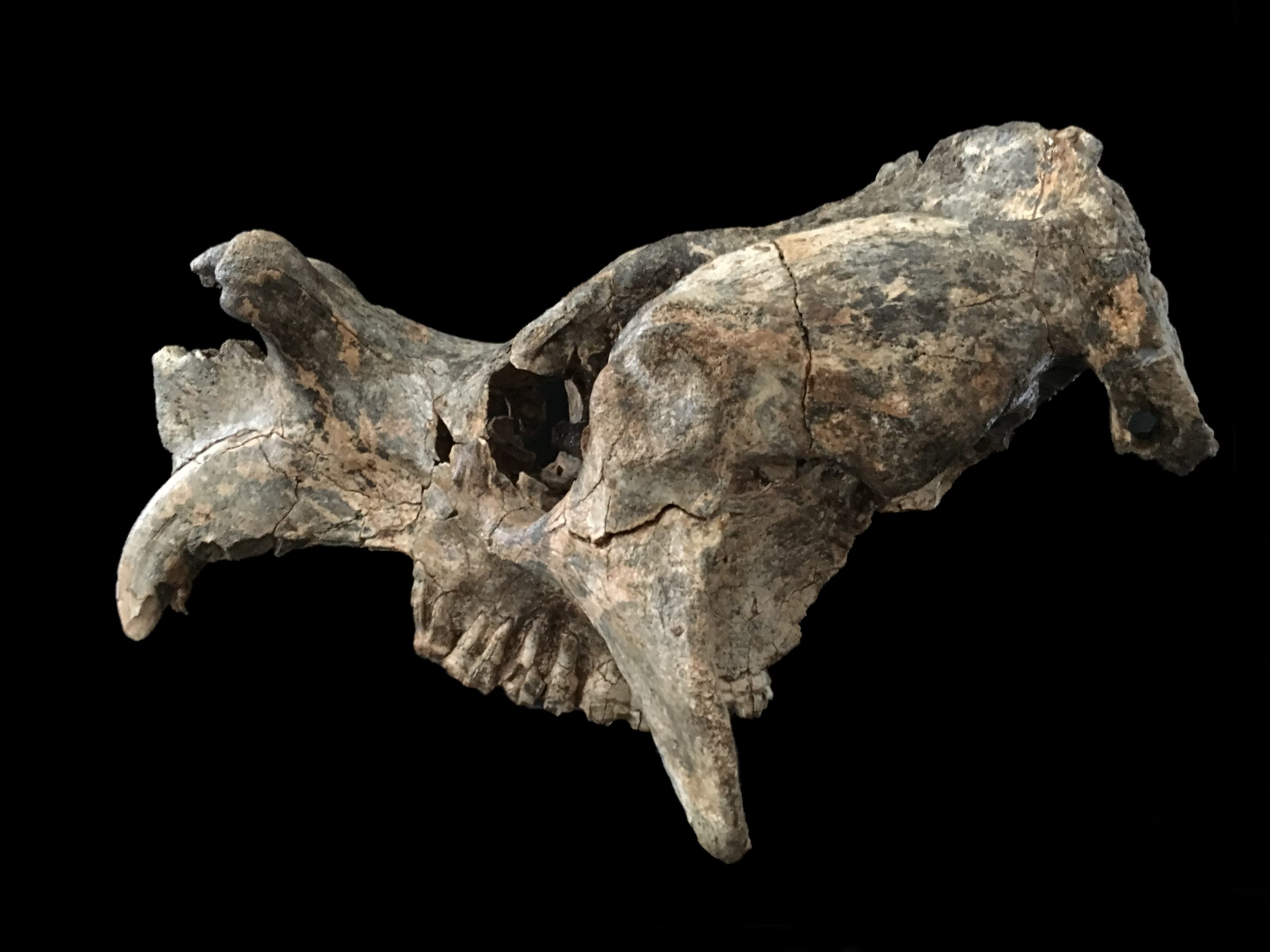Catch of the Day
Ancient Trout Cod Fossils from Bugaldie’s Chalk Mine
As a young child approaching my grandparent’s farm out beyond Bugaldie, north-west of Coonabarabran, I used to stare out the car window. After many hours on the road, mesmerised by hours of endless gum trees, the Warrumbungle Mountains finally appeared.
As we drove along the flat plain near the railway siding of Bugaldie, my mother pointed out a streaky white seam exposed on a distant hill. I was intrigued by her story of a chalk mine she had visited there when she was a child, where she had found an ancient fish fossil. Hers was just like these three specimens of Maccullochella macquariensis (trout cod or Murray cod), also recovered at the chalk mine on Mount Rundle (‘Chalk Mountain’) near Bugaldie, by fossil and mineral collector Chris Bowman.
The volcanic basalt layers above and below the chalk layer have been dated to roughly 13 and 17 million years ago respectively, confirming that the fish in these fossils lived, and died, during that period – the Miocene epoch. The chalk (more accurately known as diatomite or diatomaceous earth) was created by a river steadily depositing sediments largely composed of the skeletons of algae. These fish, as well as crustaceans and plants, became buried in this sediment.
This trout cod species stills swims in Australia’s fast-flowing freshwater streams today, though it is endangered. Compared to their descendants, these fossilised fish were relatively small when they died. One researcher has suggested they may have had little to eat and died from starvation or were killed by hot volcanic spring water.
As thousands of years passed, the chalk solidified and the fish bones became fossilised. Finally, in 1919 the value of the dusty white deposit was recognised, and a mine was established at Chalk Mountain by Davis Gelatine Co. In 1925, the mine manager discovered the first fish fossils there, sparking great interest from researchers and tourists. Workers continued to discover and collect fish and plant specimens.
By 1968, the mine had produced over 85,000 tonnes of diatomaceous earth that was transported to Sydney for use as an abrasive, for swimming pool filters, for purifying gelatine, and making insulation material. If the mine had never been established, these fossils may never have been discovered.


